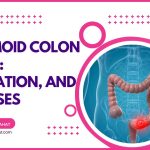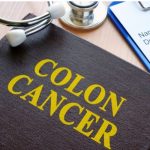7 Causes of Pain 2 Inches Left of the Belly Button.
Our content is not intended nor recommended as a substitute for medical advice by your doctor. Use for informational purposes only.
Summary: What you need to know.
The most common causes of pain two inches left of the belly button include:
- Gas pain.
- Constipation pain.
- Irritable bowel syndrome.
- Food intolerance and allergy.
- Diverticular disease.
- Kidney and ureter conditions.
- Other descending colon diseases.
- Splenic pain.
- Abdominal muscle strain.
- Others. Such as ovarian cysts or tumors, anxiety, trauma to the left side of your abdomen, etc.
1 . Gas pain.
Gas inside your digestive tract can be due to faulty eating or a disease. However, getting too much gas is almost experienced by almost everyone and is related to (gas-producing foods).
Gas can cause pain anywhere in your abdomen, including the left side of your belly button.
Gas also may be a sign of digestive disease, especially if you experience it frequently or if it is associated with other symptoms.
Examples of diseases that cause excess gas and gas pain around the umbilicus include:
- Lactose intolerance (very common).
- Irritable bowel syndrome.
- Other forms of food intolerance include fructose intolerance (found mainly in fruits) and intolerance to artificial sweeteners (such as sorbitol and xylitol).
- Food allergies.
- Celiac disease.
- Small intestinal bacterial overgrowth.
Excess gas can be felt as diffuse abdominal distension or localized in one place (including pain two inches to the left of the belly button).
Examples of gassy foods and drinks (reference).
| ITEM | EXAMPLES |
| 1. Milk and dairy products | – milk, – ice cream, – and sometimes, cheese and yogurt. |
| 2. Vegetables | – Broccoli, – cauliflower, – Brussels sprouts, – onions, – leeks, – parsnips, – celery, – radishes, – asparagus, – cabbage, – kohlrabi, – cucumber, – potatoes, – turnips, – and rutabaga. |
| 3. Fruits | – Prunes, – apricots, – apples, – pears, – peaches, – raisins, – bananas |
| 4. Whole grains | -wheat, – oats, – bagels, – wheat germ, – pretzels, – bran/bran cereal |
| 5. Legumes | – Beans, – peas, – baked beans, – soybeans, – lima beans |
| 6. Fats | Fried and high-fat foods. |
| 7. Drinks | – Carbonated beverages, – beeer, – carbonated medications |
| 8. Others | – chewing gum, – artificial sweeteners |
Learn more about gas and gas pains.
2. Constipation Pain.
The most common site of constipation pain is the left side of your abdomen (to the left of your belly button).
We define constipation as the passage of hard stool or having less than three bowel movements per week.
Chronic constipation is a widespread condition (especially in females).
The three main types of constipation are:
- Chronic idiopathic constipation: chronic constipation of unknown cause. It is more common in females.
- Irritable bowel syndrome with predominant constipation.
- Secondary constipation due to diseases (such as parkinsonism) or medications (such as Tricyclic antidepressants).
The stool stays in the last part of the colon (the sigmoid and descending colon).
The sigmoid and descending colon lie on the left side of your stomach. Distracting these parts leads to pain two inches to the left of your belly button.
3. Irritable Bowel Syndrome (IBS).
Irritable bowel syndrome is a prevalent disease. It affects women more than men (the ratio is 2.5:1).
IBS is a term used to describe a group of gut-related symptoms that come and go over a long duration (at least for six months).
Symptoms of IBS include:
- Abdominal pain (anywhere in your abdomen, including two inches to the left of your belly button).
- Altered Bowel habits (The IBS flare-up is often associated with diarrhea, constipation, or both).
- Altered stool consistency (form).
- Mucus in the stool.
- The pain often is relieved by defecation (in a minority of patients, the pain worsens with defecation).
We don’t have a clear explanation for the cause of IBS. However, laboratory investigations, abdomen imaging, and endoscopy often reveal no apparent lesions in IBS patients. That’s why we call it a “functional disease.
Always consider IBS as a cause of pain to the left of your belly button if you always get periods of abdominal pain and altered bowel habits.
4. Food intolerance or allergy.
Up to 20% of people have a food intolerance, and up to 5% have some food allergy.
Food intolerance and food allergies can cause abdominal pain anywhere in your abdomen (including the pain to the left of your belly button).
The basic differences, symptoms, and examples of food intolerance and allergy are in the table below:
Food intolerance | Food allergy |
| Affects 15-20% of the population | Affects nearly 2-5% of adults |
| Difficulty digesting certain types of food (not immune-mediated allergy). | An immune-mediated reaction to certain foods or food components. |
| Causes “recurrent acute” or “chronic” attacks of diarrhea, so much gas, and bloating. | Usually causes acute attacks related to the ingestion of offending food. |
| Intestinal symptoms: diarrhea, extensive gas, bloating, distension (looking pregnant), and abdominal pain | Intestinal symptoms are the same |
| No extraintestinal symptoms | Extraintestinal symptoms like rashes, urticaria, swollen lips or face, or severe life-threatening allergic reactions. |
| The severity of your symptoms is proportional to the amount you eat from the offending food. | Even trace amounts of the offending food can produce severe symptoms. |
Common offending foods:
| Common offending foods: (examples)
|
5. Diverticular disease.
Diverticular disease is the presence of colon diverticular (sac-like projections of the colon wall).
The most common site of diverticular pain is the lower left abdomen (to the left of your belly button). A colon diverticulum is a sac or pouch in the colon’s wall.
The presence of diverticula is common and increases with age. For example, the prevalence of diverticulosis is less than 20% at the age of forty. Then, its prevalence increases with age to reach 60% at 60 (reference).
Commonly, the diverticula have no symptoms. However, they can get inflamed, form abscesses, or become perforated.
The inflammation or abscess formation of the colon diverticula is called “diverticulitis.”
Symptoms of diverticulitis include:
- Sharp or stabbing pain on the left side of your abdomen (in the lower part, to the left of the belly button). It is the most common symptom due to the involvement of the sigmoid colon.
- The pain is usually constant, lasting for days with a gradual increase in intensity.
- Nausea and vomiting.
- Low-grade fever can also occur.
- A sense of tender mass in the lower left abdomen (in 20% of patients with acute diverticulitis).
- Severe tenderness or gardening in the lower left abdomen.
- In severe cases (with access and perforation): low blood pressure and shock may be present.
- Change in bowel habits: constipation occurs in about 50% of patients with acute diverticulitis and diarrhea in 25-35% (ref).
Risk factors of acute diverticulitis:
- Low-fiber diet.
- High fat and meat in the diet.
- Physical inactivity.
- Obesity.
- Smoking.
- Older age.
MORE: Diverticulitis 101: Symptoms, Treatment, & what to eat.
6. Left kidney and left ureter pain.
The left kidney and ureteric pain are known as (renal colics). It is one of the most common causes of sharp stomach pain (right or left). In addition, the sudden onset of sharp pain on the left side of your belly button may indicate a left kidney or ureteric stone.
Causes:
- The most common cause of renal colics is kidney stones which affect about 5-15% of people (reference).
- Insertion or removal of ureteric stents (double J stents) in patients with ureteric obstruction.
- Acute papillary necrosis: death of the papillary part of the kidney, often due to severe infection or diabetes.
- Severe kidney infection or infection of the obstructed kidney (pyelonephritis).
- Renal abscess.
- Renal artery stenosis or renal vein thrombosis.
- Kidney trauma or hematoma.
- Other less common causes include ureteropelvic junction obstructions, prostatic enlargement, abdominal or pelvic cancer blocking the ureter, and retroperitoneal fibrosis. However, these cases rarely result in acute renal colic (sharp stomach pain on the left side).
Characteristics of kidney and ureteric pain:
- Sudden onset of sharp stomach pain on the left side (left flank pain).
- The pain from the kidney is often dull, while the pain from the ureteric spasms is very sharp and stitching in character.
- The episode of ureteric pain often starts at the left side of your stomach (left abdominal pain), and it may radiate to the left lower abdomen and the left groin.
- The pain intensity is very high and lasts for several minutes.
- Nausea, vomiting, and fainting may also occur during the pain episode.
- No position or posture will relieve the pain. Also, moving doesn’t increase the intensity of pain.
- Dysuria (burning urination), altered color or urine (turbid or reddish urine), and severe urination urgency occur.
- Some may pass the stones in the urine or the toilet.
Renal colic with such intensity needs an evaluation by your doctor. The pain may go away and come again. It often responds to non-steroidal anti-inflammatory medications.
7. Other diseases affecting the descending colon.
A pain that is two inches to the left of your belly button can be due to colon conditions other than constipation and IBS; examples include:
- Inflammatory bowel disease (such as Crohn’s disease and Ulcerative Colitis).
- Colorectal cancer.
- Fecal impaction.
- Familial polyposis.
- Hemorrhoids and fissures.
8. Splenic pain.
The spleen lies in the left upper quadrant of your abdomen. Many conditions affecting the spleen can result in left stomach pain.
The most common splenic condition is the enlargement of the spleen. It occurs due to various causes, such as infections and blood disease.
The pain from an enlarged spleen is often dull and is located to the left of your belly button.
Splenic pain can also be sharp and severe, as with:
- Acute infections and splenic abscesses.
- Splenic infarction (The death of a part of the whole spleen). Infarction often occurs due to the obstruction of the blood supply.
- Splenic rupture: most often occurs due to trauma and road traffic accidents.
9. Abdominal muscle strain.
One of the most common and straightforward causes of localized abdominal pain is abdominal muscle strain.
Any strain to the left-sided abdominal muscles can lead to pain to the left of your belly button.
Abdominal muscle strains are usually caused by vigorous exercise, workouts, carrying heavy objects, or prolonged heavy physical efforts.
Symptoms of abdominal muscle strain (in the left stomach area):
- Sharp pain (usually starts suddenly at the moment of strain and continues).
- Fixed in intensity, increases significantly by moving, bending, or straining.
- It may affect your walking or movements in general.
- Sometimes, you may experience swelling or bruising at the site of strain.
The muscle pain caused by muscle strain usually resolves within a few days.
10 . Other possible causes of pain 2 inches left of the belly button.
- Left rib cage pain.
- Pancreatic pain.
- Left colorectal cancer.
- Fecal impaction.
- Mesenteric vascular occlusion.
- Intestinal obstruction.
- Trauma.
- Renal artery stenosis.
- Acute papillary necrosis.
- Renal hematoma.
- Ureteropelvic obstruction.
- Any mass or growth on the left side of your abdomen.
- Painful skin diseases such as Herpes Zoster.
MORE: Sharp (Stabbing) Belly Button Pain: Common & Uncommon Causes.
- Evidence-based
- Written by a doctor.






